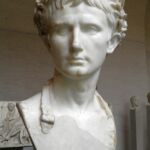During the Roman Empire, four great dynasties ruled: Julio-Claudian, Flavian, Nerva–Antonine and Severan, and three smaller dynasties: Constantinian, Valentinian and Theodosian. Almost all their representatives are individuals, so they live in human memory to this day.
Some of them are surrounded by a bloody aura and are considered by posterity as the worst beasts of antiquity. We are talking primarily about: Tiberius, Caligula, Nero, Domitian, Caracalla, Heliogabalus. Others, in turn, gained glory forever. Such were: Augustus, Claudius, Vespasian, Titus, Trajan, Hadrian, Antoninus Pius and Marcus Aurelius.
However, returning to the dynasty, their main goal was to maintain a stable and strong state after the departure of the ruler. The idea was that there would be no civil wars right after the emperor’s death and that the authorities could pass to the next member of the family, the eldest son. This type of judging who belongs to the “throne” was right and clear. However, when the mentally impaired or simply insane came to power, the situation changed dramatically. Sometimes it was necessary to go to the act of murdering the emperor. This, however, did not bring much good, because in such a situation every senator, commander of legions or province governor had a chance to succeed. Such a situation came after the end of the Seweran family or in other words Syrian (from the place of Sever’s birth). After 235 CE there was a crisis when power rested almost every year in other hands.
The empire was devastated by constant civil wars, which were accompanied by barbarian invasions. Fighting armies wreaked havoc among civilians and depopulation affected entire regions. Progressing inflation and decline in the value of coins were destroying the economy. A new factor appeared in religious life, Christianity, which at that time was in opposition to imperial power.
The empire restored to become Diocletian, who carried out far-reaching reforms and created a new Constantine dynasty that survived to 364 CE. At that time, there were two other families that did not survive for too long.







